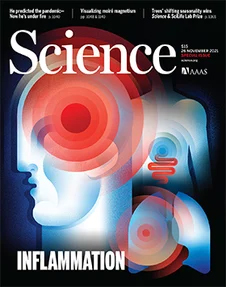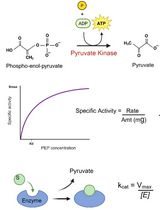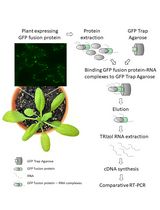- EN - English
- CN - 中文
A SYBR Gold-based Label-free in vitro Dicing Assay
基于 SYBR Gold 的无标记体外切割试验
(*contributed equally to this work) 发布: 2022年04月05日第12卷第7期 DOI: 10.21769/BioProtoc.4382 浏览次数: 2652
评审: Wenrong HeYuan WangYe Xu
Abstract
In Arabidopsis, DICER-LIKE PROTEIN 3 (DCL3) cuts the substrate pre-siRNA into a product siRNA duplex, encompassing one 23-nt strand and one 24-nt strand. To monitor the separation of the siRNA duplex with only 1-nt difference, we developed this protocol to evaluate the in vitro dicing activity of DCL3. The method can be applied for measuring the lengths of single-stranded RNA separated through denaturing urea polyacrylamide gel electrophoresis (urea PAGE), which are visualized by a label-free fluorescence SYBR Gold, and quantified in a multi-function imager. This label-free method is easy to conduct, has low cost, and lacks the hazard of the traditional radio-labeled method. This method can also be adapted to the other Dicers and small RNAs.
Keywords: Dicer (Dicer)Background
Dicer family endonucleases play critical roles in small RNA (sRNA) biogenesis by cutting the substrate double-stranded RNA (dsRNA) into product dsRNA with defined lengths, of approximately 19–30 bp (Chen et al., 2010; Borges and Martienssen, 2015). The substrate recognition of Dicer depends on the termini features of the dsRNA. Typically, Dicers prefer substrate dsRNA, with the guide strand possessing 5’-phosphate, and the complementary strand possessing a 1- or 2-nt 3’-overhang. The cutting of the two RNA strands is simultaneously conducted by the paired RNaseIII domains, towards the 3’ of the guide strand and the 5’ of the complementary strand, yielding asymmetric dicing. Depending on the different 3’-overhang lengths, the two strands of the product dsRNA could be with the same length or with minor differences in length (usually, only ~1–2-nt). In addition, the cleavage efficiencies of different Dicers vary considerably (Fukudome et al., 2011; Hung and Slotkin, 2021). Therefore, a bench-based simple and easy-to-use method to monitor both the lengths and quantity of the single-stranded RNA (ssRNA) strands of the siRNA duplex is required. The method should be efficient in separating different 19–30-nt ssRNAs with single base resolution, and could be adapted to a quantifying system. In past decades, the dicing assay was usually conducted by using phosphorus-32 (32P) to label the RNA termini, denaturing urea polyacrylamide gel electrophoresis (urea PAGE) to separate ssRNA strands, and autoradiography to visualize the ssRNA on PAGE, which is expensive, hazardous, and time-consuming (Adachi and Yu, 2014). To prevent the hazards linked to 32P and to make the assay more convenient in a small-scale lab, we developed this label-free, fluorescent dye SYBR Gold-based in vitro dicing assay, based on several previously published protocols (Tuma et al., 1999; Seo et al., 2019). In this protocol, we firstly listed the details for the dicing reaction (Nagano et al., 2014), using a plant dicer called DICER-LIKE PROTEIN 3 (DCL3), and for running urea PAGE (Adachi and Yu, 2014), which employs 6–8 M urea to denature secondary RNA structures, enables the distribution of the ssRNA on the gel according to molecular weight (Dodd and Hudson, 2007; Ellington and Chory, 2001), and is convenient for monitoring the length differences in ssRNAs (Summer et al., 2009; Petrov et al., 2013; Green and Sambrook, 2021). The bands of the ssRNAs are further stained by SYBR Gold, which is a label-free fluorescent dye (Tuma et al., 1999; Seo et al., 2019), scanned by an image recorder, quantified using the ImageJ software (Seo et al., 2019; Gassmann et al., 2009; Schneider et al., 2012), and statistically analyzed by the Origin 7.0 software. Considering the conserved mechanism of Dicer family enzymes and length distributions of sRNA, the protocol presented here can be adapted to dicing assays for most Dicer proteins, as well as other analysis regarding the length and quantification of sRNAs.
Materials and Reagents
1.5 mL microcentrifuge tubes (Axygen, catalog number: MCT-150-C)
MgCl2 (BBI Life Sciences, catalog number : A601336-0500)
HEPES (BBI Life Sciences, catalog number: A600264-0250)
KOH (Sangon, catalog number: A610441)
NaCl (Sigma, catalog number: S9625)
DTT (VETEC, catalog number: V900830)
Purified DCL3 protein (self-prepared in a buffer of 150 mM NaCl, 5 mM MgCl2, 2 mM DTT, and 50 mM HEPES-KOH, pH 8.0)
RNA oligos (Takara)
Urea (Sigma, catalog number: U1250)
40% Acrylamide/bis-acrylamide solution (19:1) (Sangon, catalog number: B546012-0500)
N,N,N’,N’-tetramethylethylenediamine (TEMED) (Amresco, catalog number: M146)
Ammonium persulfate (APS) (Amresco, catalog number: M133)
Boric acid (Energy Chemical, catalog number: A060316)
Tris base (VETER, catalog number: WXBD5491V)
EDTA (Sangon, catalog number: E671001)
DEPC water (Sangon, catalog number: B501005)
2× RNA Gel-Loading Buffer (Sangon, catalog number: B300596)
SYBRTM Gold (Invitrogen, catalog number: S11494)
RNA Marker (Takara, catalog number: 3416)
RNaseZap (Invitrogen, catalog number: AM9780)
Reaction buffer (50 mL) (see Recipes)
10× TBE (1 L) (see Recipes)
Denaturing gel mix (500 mL) (see Recipes)
Running buffer (1 L) (see Recipes)
Equipment
20 cm × 20 cm glass plates (Beijing Liuyi Instruments, custom designed)
1-mm thick spacers (Beijing Liuyi Instruments, custom designed)
Gel-sealing tape
Gel comb (Beijing Liuyi Instruments, custom designed)
Binder clips
Hi-temperature Dry Bath (Yooning, catalog number: YN-GO2-156)
Centrifuge (Eppendorf, Centrifuge 5424R)
High voltage electrophoresis system (BIO-RAD, PowerPacTM HV Power Supply)
Gel electrophoresis chamber (Beijingliuyi, catalog number: DYCZ-22A)
Multi-function Imager (GE Healthcare, Amersham Imager 600)
Orbital Shaker (Yooning, catalog number: CS-200)
Software
ImageJ (https://imagej.nih.gov/ij)
Origin 7.0 (http://www.originlab.com)
Procedure
文章信息
版权信息
© 2022 The Authors; exclusive licensee Bio-protocol LLC.
如何引用
Readers should cite both the Bio-protocol article and the original research article where this protocol was used:
- Wang, Q., Xue, Y., Zhang, L., Zhong, Z., Feng, S., Wang, C., Xiao, L., Yang, Z., Harris, C. J., Wu, Z., Zhai, J., Yang, M., Li, S., Jacobsen, S. E. and Du, J. (2022). A SYBR Gold-based Label-free in vitro Dicing Assay. Bio-protocol 12(7): e4382. DOI: 10.21769/BioProtoc.4382.
- Wang, Q., Xue, Y., Zhang, L., Zhong, Z., Feng, S., Wang, C., Xiao, L., Yang, Z., Harris, C. J., Wu, Z., et al. (2021). Mechanism of siRNA production by a plant Dicer-RNA complex in dicing-competent conformation. Science 374(6571): 1152-1157.
分类
生物化学 > RNA > RNA-蛋白质相互作用
生物化学 > 蛋白质 > 活性
您对这篇实验方法有问题吗?
在此处发布您的问题,我们将邀请本文作者来回答。同时,我们会将您的问题发布到Bio-protocol Exchange,以便寻求社区成员的帮助。
Share
Bluesky
X
Copy link












